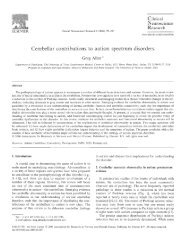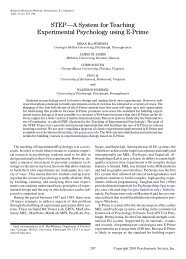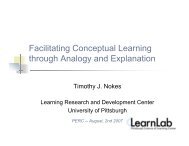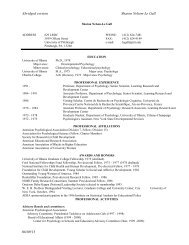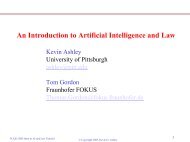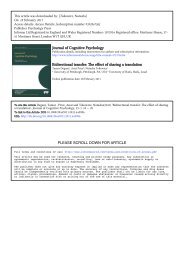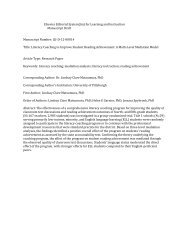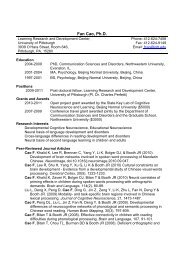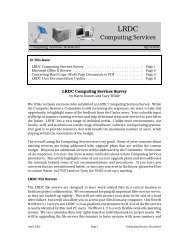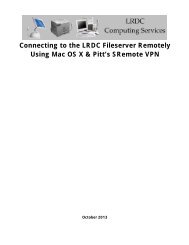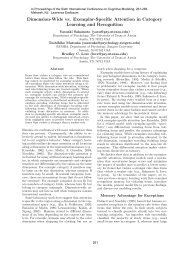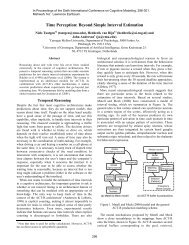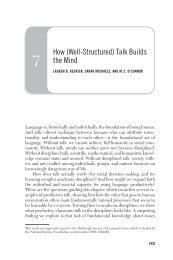Nested Learning Systems for the Thinking Curriculum
Nested Learning Systems for the Thinking Curriculum
Nested Learning Systems for the Thinking Curriculum
Create successful ePaper yourself
Turn your PDF publications into a flip-book with our unique Google optimized e-Paper software.
FIGURE 11. Pedagogy and content routine.aimed at building professional learning communities (McConachie& Petrosky, 2010). The institute worked in two urban districts: sixhigh schools in Austin, Texas, in which all teachers in <strong>the</strong> four corehigh school disciplines (science, math, history/geography, andEnglish) participated, and schools in <strong>the</strong> Los Angeles UnifiedSchool District in which <strong>the</strong> departments of ma<strong>the</strong>matics and/orEnglish, along with <strong>the</strong>ir principals, agreed to participate.In both districts, intensive professional development led bysubject matter experts was organized around a “spine” of curriculumunits and lessons that were explicitly linked to <strong>the</strong> districts’official curriculum guidance documents. The units and lessonswere designed to educate teachers in high-cognitive-demand<strong>for</strong>ms of classroom instruction. The <strong>for</strong>m of training used wasintended to induce new <strong>for</strong>ms of professional engagement inwhat we have termed a “kerneling process” (Resnick & Spillane,2006; Resnick, Spillane, Goldman, & Rangel, in press) in which<strong>for</strong>mal routines embedded in an institution give rise to a nextgeneration of practices that are kin to <strong>the</strong> externally introducedroutine but not identical to it. Kernel routines are designed todeliberately displace standard routines of practice. Participatingteachers are expected at first to follow <strong>the</strong> new routines quitefaithfully. However, <strong>the</strong> routines have been developed with <strong>the</strong>goal of encouraging new <strong>for</strong>ms of professional interaction thatare consonant with <strong>the</strong> curriculum plan but crafted by <strong>the</strong> participantsto fit <strong>the</strong>ir interactive and learning preferences.The pedagogy and content routine (PCR) begins by engagingteachers in a tightly crafted routine consisting of a specific set ofprofessional development practices. Training and practice ofPCR occurs separately <strong>for</strong> each teaching discipline, but when <strong>the</strong>routine is used <strong>for</strong> several disciplines within a school (as it was inour Austin implementation), substantial “cross-seeding” anddevelopment of a larger institutional change within a school isexpected to occur.Figure 11 depicts how PCR works. Teachers, coaches, andlead teachers first experience <strong>the</strong> sequence of activities describedin column 2. They begin as learners of model lessons taught by atrainer. They <strong>the</strong>n engage in a trainer-led process of “deconstructing”or interpreting what <strong>the</strong>ir learning process has been and <strong>the</strong>role of <strong>the</strong> trainer in evoking <strong>the</strong>ir learning processes. Next (stillin column 2), participants are asked to teach <strong>the</strong> model lesson ora modification of <strong>the</strong>ir own design. They are observed by <strong>the</strong>trainer and o<strong>the</strong>r teachers, and <strong>the</strong>y <strong>the</strong>n participate with <strong>the</strong>observers in an analysis of <strong>the</strong> pedagogy and content of <strong>the</strong>irteaching. Teachers have <strong>the</strong> experience of both observing andbeing observed during this phase of implementation—alwayswith careful attention to <strong>the</strong> content taught and <strong>the</strong> cognitiveprocesses evoked among students. They next modify or adapt <strong>the</strong>lesson <strong>for</strong> future teaching and continue <strong>the</strong> teaching-observinganalyzingsequence. Alternatively, <strong>the</strong>y can ask <strong>for</strong> one or moreadditional model lessons from <strong>the</strong> spine.Even as <strong>the</strong> teacher group cycles through <strong>the</strong> PCR, <strong>the</strong> kernelingprocess is expected to engender new <strong>for</strong>ms of school practice.As shown in column 3, we expect changes in leadership activity,in norms of trust and collaboration, and in specific collaborative194educational ResearcherDownloaded from http://er.aera.net at UNIV OF PITTSBURGH on March 30, 2012



